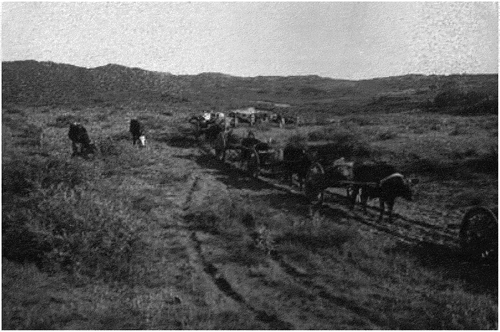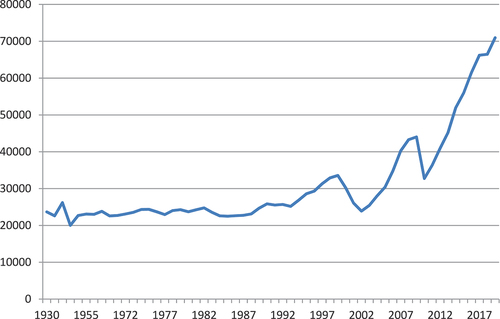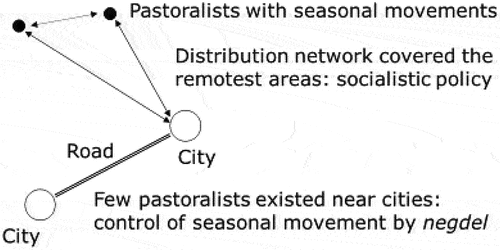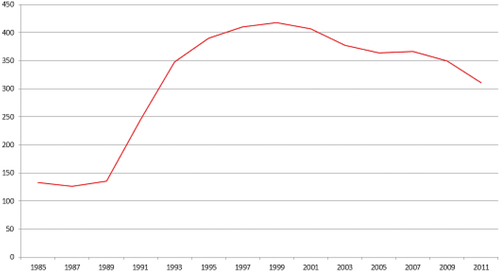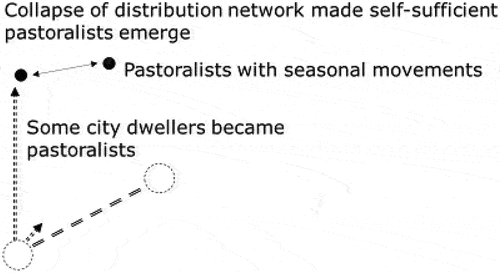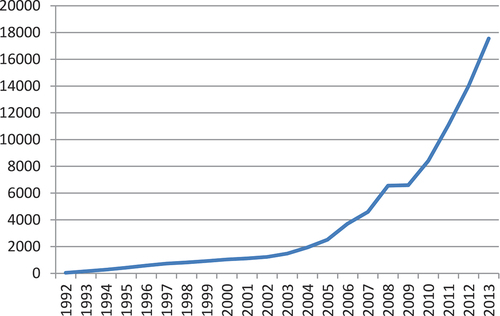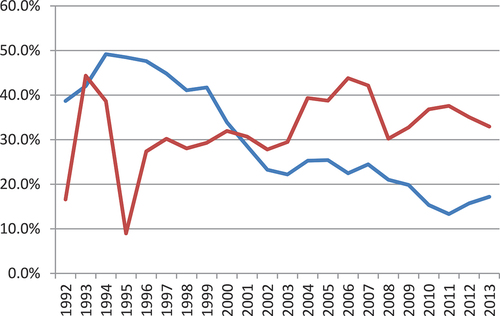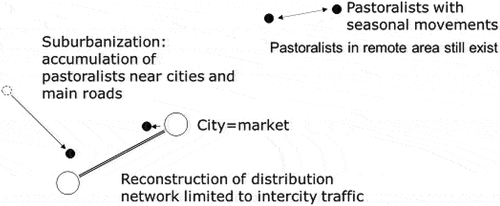Figures & data
Table 1. Usage of Mongolian livestock for subsistence use and MSU.
Table 2. Comparison of average area of pasture, number of livestock and livestock density.
Figure 1. Relationship between Mongolian natural environment, pastoralists’ food and livestock weight.
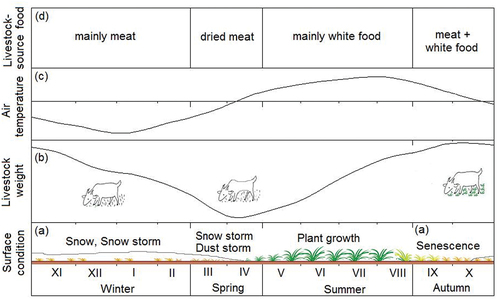
Photo 1. Chinese ox-wagon team at the Riverside of Nugas Gol, July 121931.
